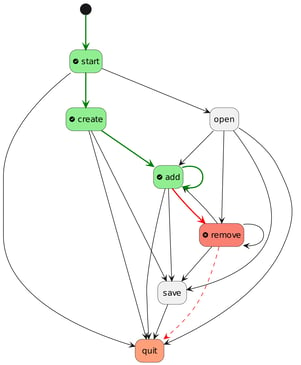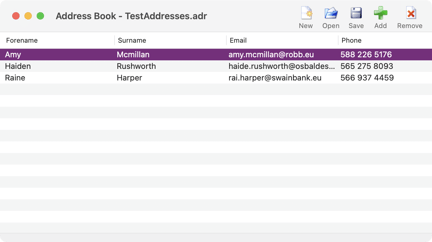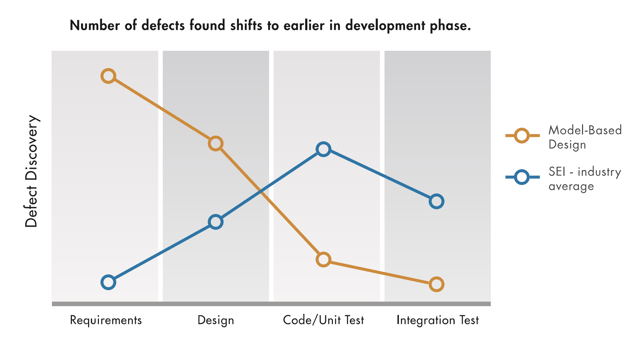For test engineers seeking a systematic and organized approach to testing, model-based testing offers a powerful toolset. This method involves working with models that guide the testing process.
Besides creating models of tests, you can model, for example, application behavior, application structure, data, and environment. In this article, our core focus will be on testing – so, thinking about what aspects to test and how to do that drives the modeling.
Let’s delve deeper into what model-based testing entails, its benefits, challenges, and scenarios where it is most effective.
What is Model-Based Testing?
Model-based testing is a testing approach that revolves around the use of models. Unlike traditional testing, which involves scrutinizing every intricate detail, model-based testing takes a more general approach. It allows you to concentrate on the core functionalities without being bogged down by all the little details.
Let’s take an example – say that you’re testing an address book application. In this case, you could model the following actions:
- Start the application
- Create a new file
- Add contacts
- Remove contacts
- Save the file
- Open the file
- Quit the application
The idea is not to model the whole application, as a developer would, but rather to get a grasp of the test cases you need to prioritize. This will help in organizing your test cases and in the end your test scripts, which can then be used for automating the test cases.


Benefits of Model-Based Testing
1. Helps focus on the things that matter
By focusing on high-level abstractions, model-based testing helps you avoid getting lost in the details. This strategic approach allows you to skip unnecessary test cases, optimizing testing efforts and resources.
Ultimately, this leads to higher-quality tests that accurately represent critical functionalities.
2. Makes communication easier
Models help in finding a common understanding of the requirements and detecting potential misunderstandings. They make it easier to convey testing needs to both internal and external stakeholders.
For example, with models, you could show the management what your test process looks like and why additional resources are needed. Or you could explain to the development team how you’re currently testing and discuss why something is not working as it should.
The visual aid that models offer is often more effective than discussing the problems verbally or looking at abstract test scripts.
Better communication in the early stages of the development process also leads to early detection of bugs – our benefit number 3.
3. Avoid defects in the early stages of the product
In the traditional development process, the steps of requirements, design, and testing are performed sequentially using a variety of tools. As testing is the final stage, most defects – accumulated throughout the previous stages – are caught quite late in the process. This makes fixing them time-consuming and costly.
Model-based testing is one methodology further enabling so-called shift-left testing. This refers to the shift in the timeline – testing can begin already at the requirement phase.
Models can be shared with project stakeholders, before the implementation, to verify requirements and to identify gaps within the requirements. It might also reveal a problem area if you cannot model something.
As a result, defects are caught and removed earlier, lowering the total cost of development. According to MathWorks, the savings can range from 20 to 60% when compared with traditional testing methods.

Source: MathWorks (SEI = Software Engineering Institute)
4. Effort reduction in implementation and maintenance
While modeling requires initial effort, it significantly reduces the effort needed for implementation and maintenance.
Model-based testing utilizes the modularization of test cases. In the case of traditional testing, when some element of your application changes, you might have to change every individual test case. With model-based testing, you can use the building blocks, like Legos, and fixing one single block will bring all your test cases up to date.
Also, there are time-saving benefits as you learn to operate in a more organized way. You can detect the highest priority tests – and avoid any redundant work.
Challenges of Model-Based Testing
1. Mindset transition
Transitioning from a traditional testing process to model-based testing requires a period of adjustment and learning.
2. Specific skill set required
Not all test engineers may be proficient in abstract modeling. Creating effective models demands skills such as abstract thinking and generalization. To succeed, you need to keep a bird’s eye view of the whole testing process.
3. Abstraction level challenge
Selecting the right level of abstraction is crucial. Too abstract, and tests may become less useful; too detailed, and the model may be challenging to work with.
However, abstraction inherently involves simplification and can lead to the loss of critical details, potentially overlooking important aspects.
When to Choose Model-Based Testing?
While model-based testing is a powerful tool, it may not be suitable for every scenario. If you're dealing with a straightforward application, it may be overkill, potentially leading to over-engineering.
However, for complex software systems and teams capable of working at abstract modeling levels, model-based testing proves invaluable.
Conclusion
Model-based testing is a powerful approach that empowers test engineers to focus on testing the critical aspects of the application under test. By leveraging models as high-level abstractions, teams can enhance test quality, reduce effort, and improve communication.
While it requires a shift in mindset and specific skills, the benefits far outweigh the challenges, particularly in complex software environments. As with any testing methodology, the key lies in thoughtful application and adaptation to suit specific project needs.
---
If you want to learn more about software testing best practices, download our beginner’s guide here.
Part 2: Model-Based Testing best practices
In the second part of this article we dive into model-based testing best practices and testing tools. Here you will find a real world example on how to achieve model-based testing in Squish.


